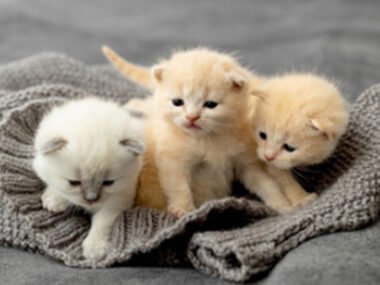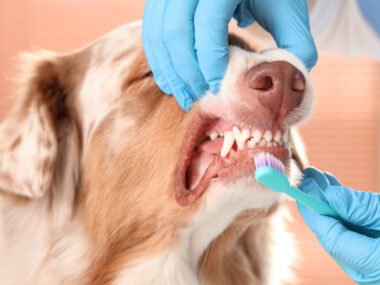The human-animal bond has existed for millennia, evolving from primitive alliances formed for survival into deeply emotional connections that enrich the lives of countless individuals. This relationship, rooted in mutual respect and understanding, has evolved into something far more profound than companionship—it has become a lifeline, an emotional support system, and an unspoken dialogue between species.
Whether it’s the steadfast loyalty of a dog or the calming presence of a cat, animals often convey emotional truths that are easily overlooked in everyday human interaction. In the silent moments shared with them—those quiet evenings, long walks, or comforting snuggles—humans find validation, warmth, and often, a mirror reflecting their truest selves.
As modern life grows more emotionally taxing, these furry companions become sanctuaries of peace, reminding their human counterparts that love doesn’t always need to be explained—it just needs to be felt.
Healing in Fur and Friendship
Animals, particularly those kept as pets, are increasingly recognized not only for their companionship but also for their therapeutic potential. Emotional and psychological wounds often run deep, manifesting in ways traditional therapy sometimes struggles to address. This is where animal-assisted therapy has gained significant traction, helping people with anxiety, PTSD, addiction recovery, and even grief.
A well-timed nuzzle from a dog or the soft rumble of a cat’s purr has been shown to reduce stress hormones, lower blood pressure, and release oxytocin—the “feel good” chemical that enhances bonding and trust.
Among emerging care models, the integration of animals into recovery environments has reshaped therapeutic experiences. Facilities are now recognizing the powerful emotional conduit pets can be, with some adopting inclusive approaches that redefine healing spaces. One such instance is the rise of pet friendly rehab centers, which allow individuals undergoing recovery to remain close to their pets.
The presence of a familiar, nonjudgmental animal can foster emotional stability during one of the most vulnerable periods of a person’s life. These settings don’t merely offer a break from clinical monotony; they create a bridge between the internal chaos of healing and the soothing, grounding presence of a beloved animal.
A Silent Language of Connection
Animals possess a remarkable ability to understand human emotions without the need for spoken language. Their attunement to body language, energy, and mood allows them to respond with surprising insight. Dogs, for instance, often sense sadness and will offer physical closeness or lay a gentle head on a lap. Cats may curl beside someone who is grieving, staying close without asking for anything in return. This kind of intuitive response fosters an emotional depth rarely found in verbal interactions.
What makes these exchanges so unique is their purity. There are no pretenses in a dog’s wagging tail or a bird’s delighted chirp. There are no ulterior motives—just a mutual understanding that transcends spoken words.
Companionship in Everyday Life
Beyond therapeutic settings, the everyday companionship offered by animals transforms mundane routines into moments of significance. A morning walk becomes a shared adventure with a dog bounding ahead, ears perked, and senses alert. Feeding time becomes a cherished ritual. Even sitting together on a couch in silence becomes an act of mutual comfort. These shared routines add structure, emotional grounding, and purpose to daily life.
For individuals who live alone or work demanding jobs, the presence of a pet provides a sense of emotional security. The knowledge that another living being relies on them, cares for them, and responds to their presence injects warmth into what would otherwise be solitary days.
The Impact on Children and Families
For children, growing up with animals nurtures empathy, patience, and a sense of responsibility. Whether it’s learning to gently pet a kitten, understanding when a dog needs space, or taking part in daily feeding routines, children internalize lessons about care and compassion that last a lifetime. Animals also provide a source of emotional security during times of stress, be it academic pressure, family changes, or the growing pains of adolescence.
Families that include animals often find themselves drawn closer through shared activities centered around their pets. Walks, playtime, grooming, or simply watching a pet sleep can become moments of genuine bonding.
Aging, Loss, and the Final Goodbye
As people age, their social circles often shrink. Retirement, relocation, or the loss of a spouse can lead to emotional isolation. For seniors, pets often become vital sources of joy and purpose. Feeding, grooming, and walking routines help maintain cognitive and physical engagement. Just as importantly, the presence of a pet alleviates the emotional void that sometimes accompanies later stages of life.
Yet the depth of the human-animal bond also brings with it the inevitability of grief. The loss of a beloved pet can be as profound and devastating as the loss of a human family member. The grief is often private and unspoken, misunderstood by those who have never experienced such a bond.
The connection between animals and humans isn’t bound by vocabulary, status, or condition. It is a mutual recognition of value, an exchange of affection without demand. In a world that often feels loud, chaotic, and emotionally fragmented, these silent companions offer a clarity of connection—a bond beyond words.










